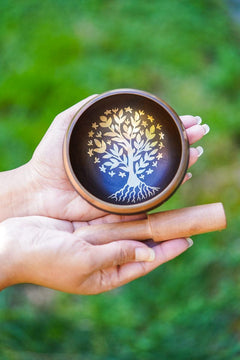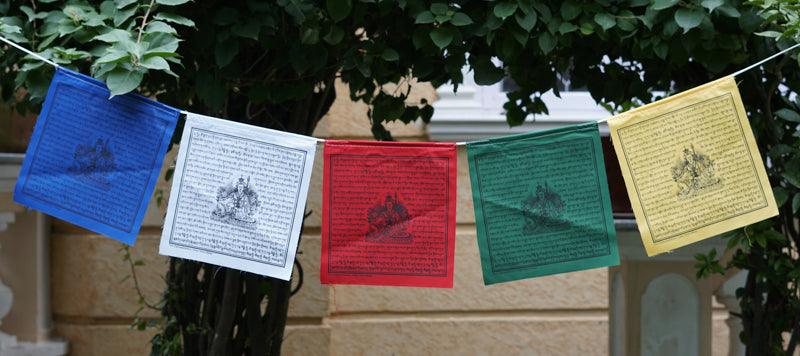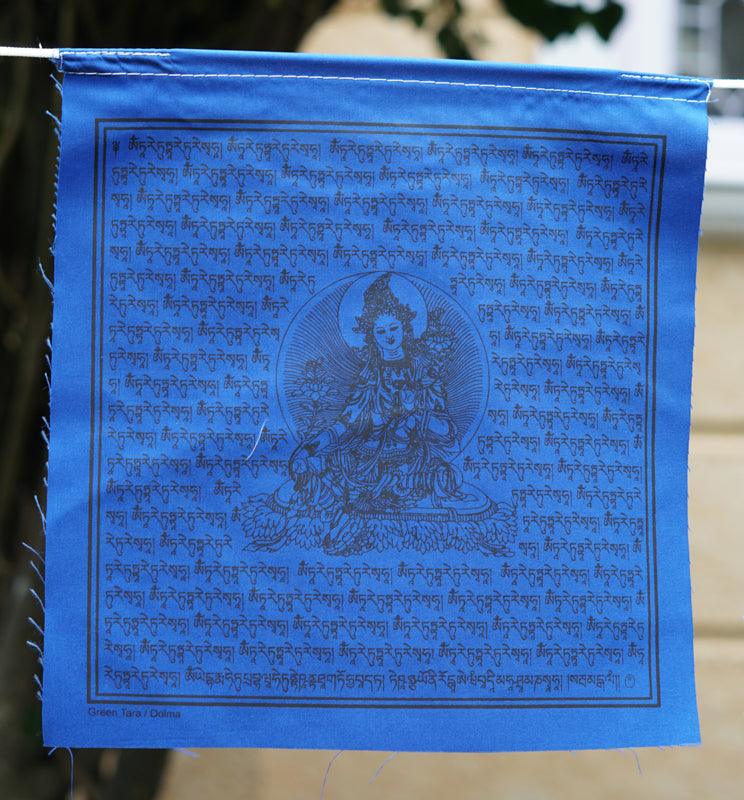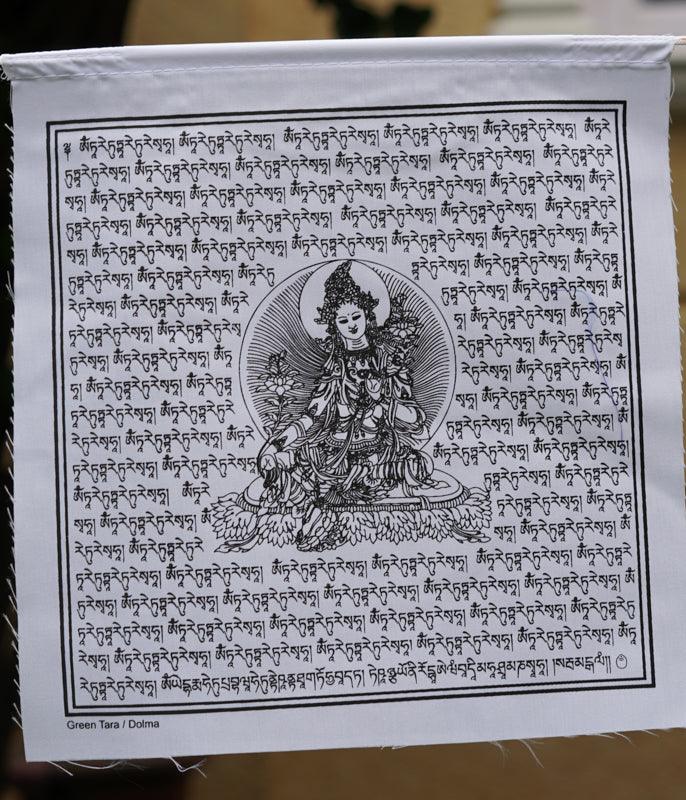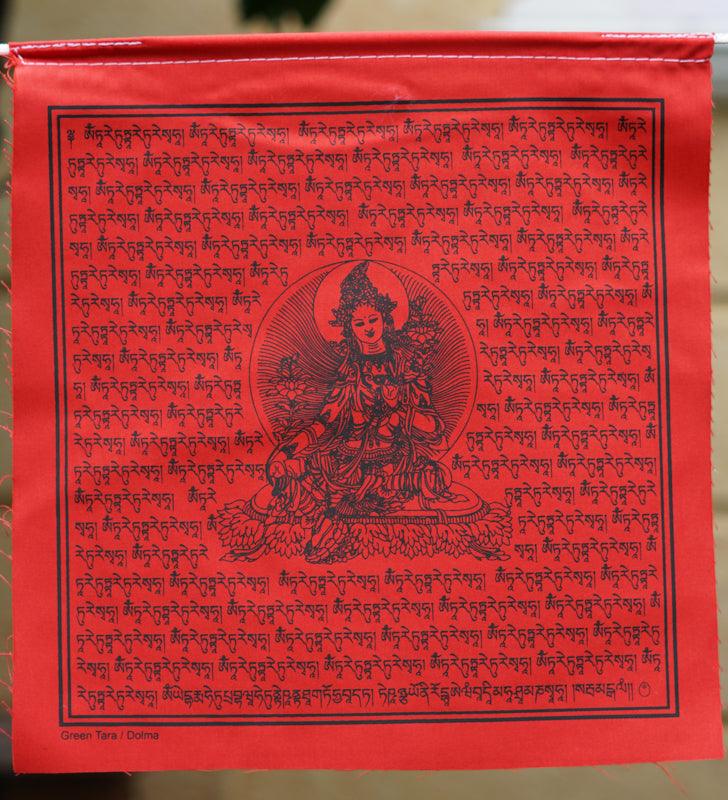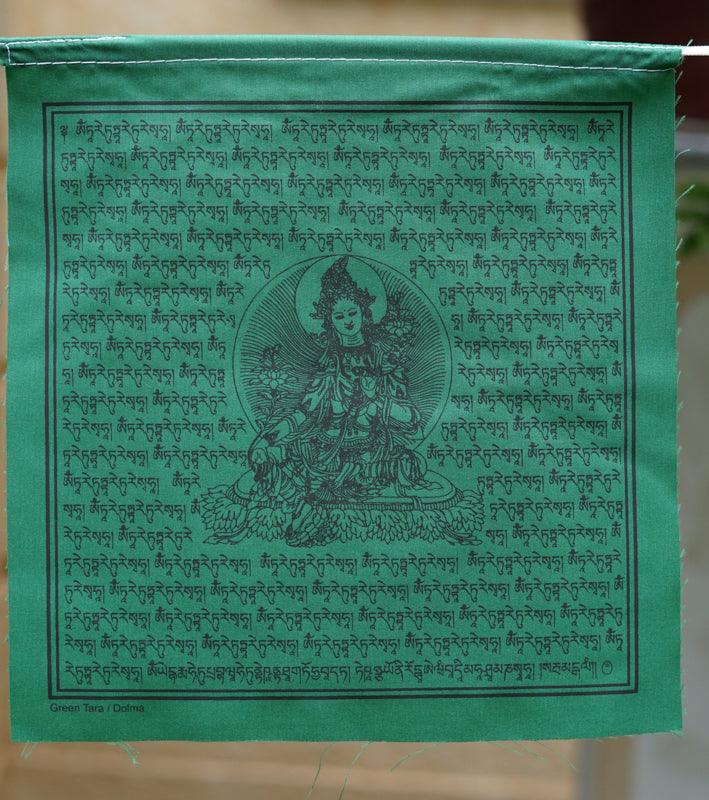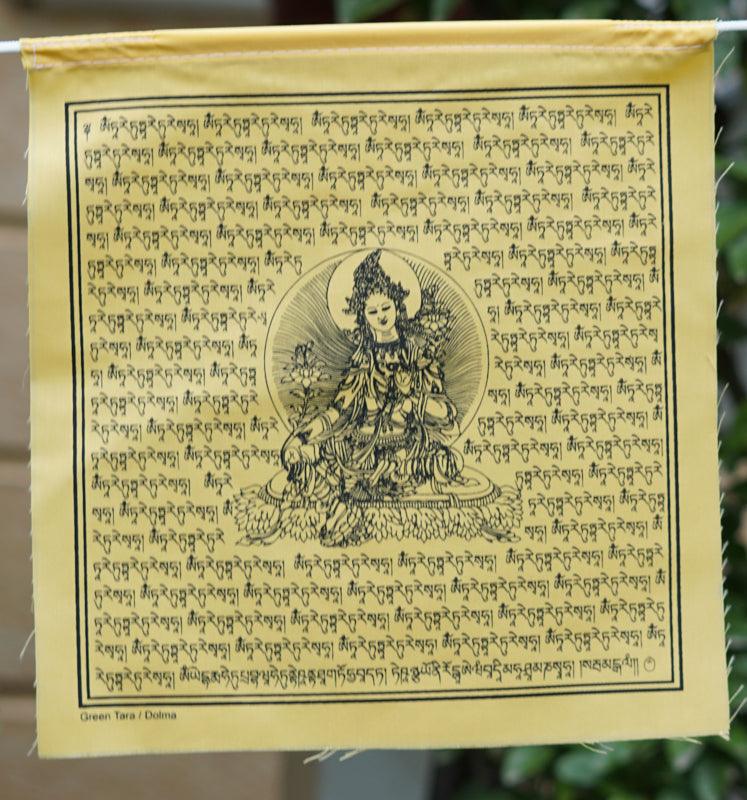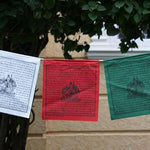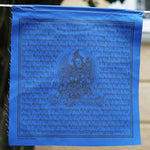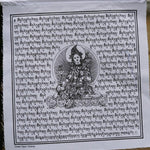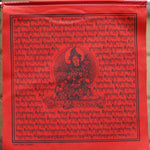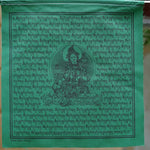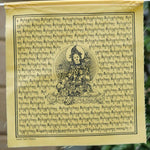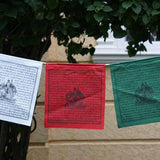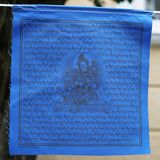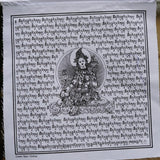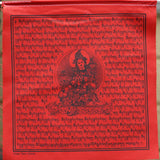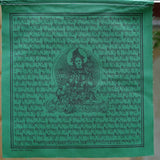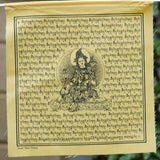Supporting Artisans since 1983
From Nepal To your door
Carry the blessings of the Himalayas into your sacred space with our authentic prayer flags. At Himalayas Shop, we offer beautifully handcrafted prayer flags that carry centuries of tradition and spiritual intention. Each flag is a whisper of peace, compassion, and protection—meant to uplift the spirit and bless the space with positive energy as they flutter in the wind.
Crafted with Devotion by Local Artisans
Woven with Meaning. Aligned with Spirit.
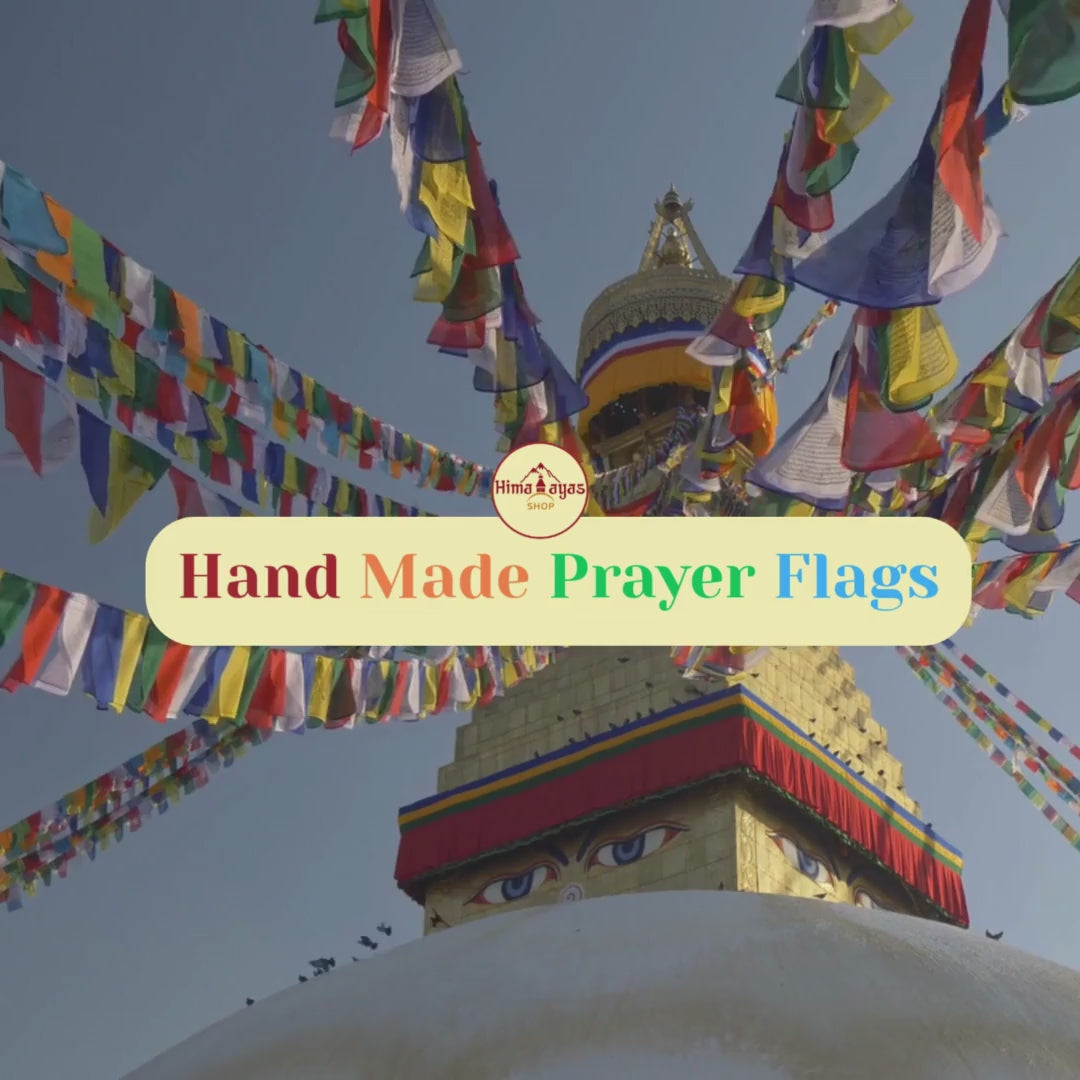
@himalayasshop
Lungta | Prayer Flags | Meditation Alter Banner Guide
What are Tibetan prayer flags?
Tibetan prayer flags are traditional cloth flags that carry prayers and mantras. They are used to promote peace, compassion, strength, and wisdom. As the wind passes through them, it is believed to spread the blessings into the surroundings.
What do the colors on the prayer flags represent?
Each color corresponds to an element and a direction:
- Sky/Space
- Air/Wind
- Fire
- Water
- Earth
These colors are always in the same order and represent harmony and balance in nature.
Where should I hang prayer flags?
Prayer flags are best hung in high places where the wind can carry their blessings — such as between trees, on balconies, rooftops, or near altars. Traditionally, they are placed outdoors facing the wind.
In modern settings, many people also hang prayer flags or altar banners indoors — above meditation spaces, doorways, or walls — both for spiritual inspiration and decorative purposes.
Do I need to follow any rituals before hanging them?
While not mandatory, it is recommended to hang prayer flags with a mindful intention or prayer. Many people hang them on auspicious days according to the Tibetan calendar or on a Full Moon Day to align with positive spiritual energy.
Do prayer flags need to be replaced?
Yes. Over time, the flags fade and fray, which symbolizes the natural passing of all things. When replacing them, it’s respectful to burn the old ones or dispose of them mindfully, often by letting them return to nature.
Why Himalayas Shop?
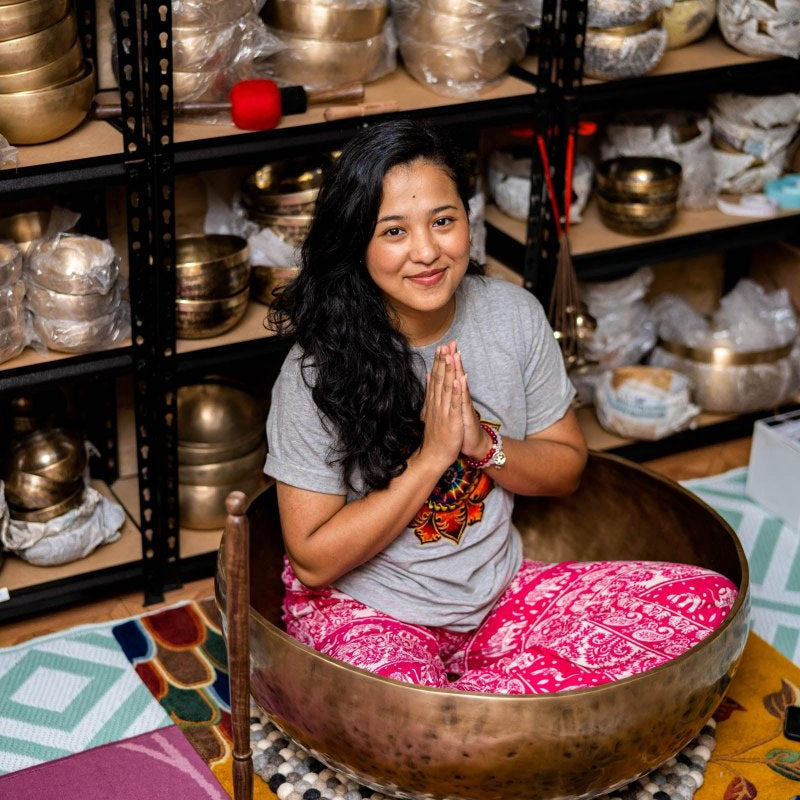
SMALL BATCH, BIG IMPACT
At Himalayas Shop, we have a deep connection with our artisans, understanding their dedication and the energy they invest in their creations. We believe that true beauty in art comes from a free soul, so we give our artists the time and space they need to create their best work. We place orders in small batches frequently, ensuring that our artisans have steady work throughout the year.

REAL PEOPLE & REAL PRODUCTS
We take immense pride in working with talented artists who bring their unique skills to life. By showcasing their crafts, we not only provide you with the finest quality products but also support these artisans financially, ensuring that their arts and crafts are preserved for future generations.

SHARING THE SYMBOL OF WISDOM
Our pursuit of this business is driven by the spiritual wisdom embedded in these handicrafts. Most of our products are closely linked to Buddhist teachings. By understanding the symbolism behind these items, you can enhance your spiritual journey, finding pure happiness and joy.
Customer Support
Fast shipping
We are happy to announce we officially ship internationally! All orders are dispatched from our warehouse in Australia or Nepal within 1 - 3 business days.
Order tracking
Tracking numbers are automatically sent as soon as your order is packed. Please check your junk folder if you do not receive one 72hrs after placing your order.
Get in touch
If you have any questions about your order, please contact us. Our customer service is available Monday through Friday from 8am until 5pm.




